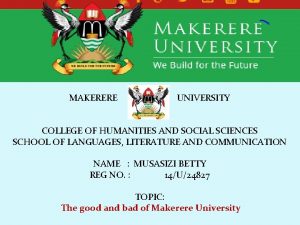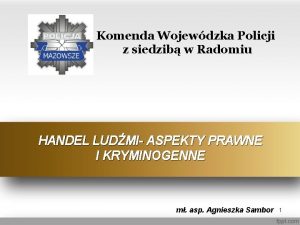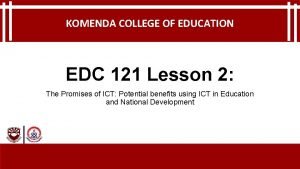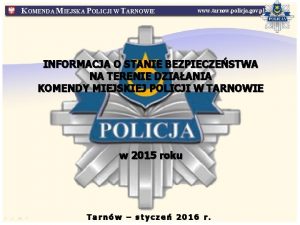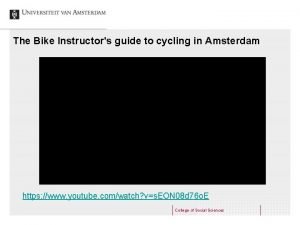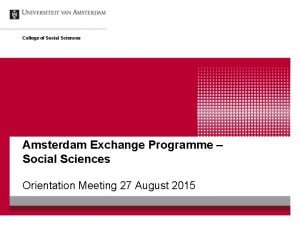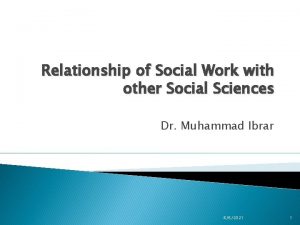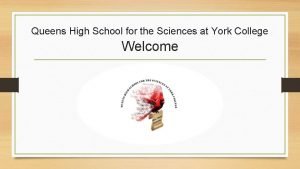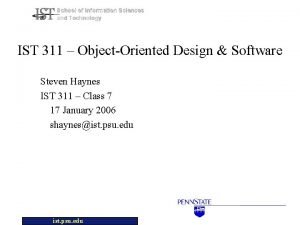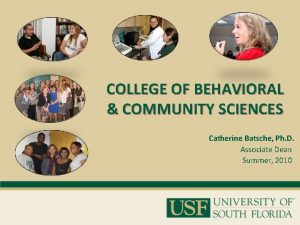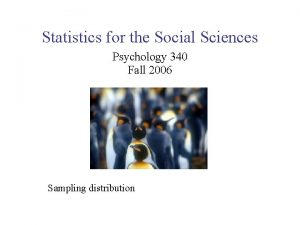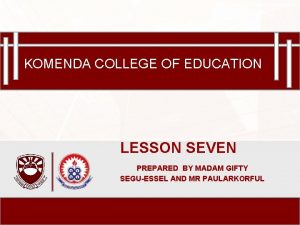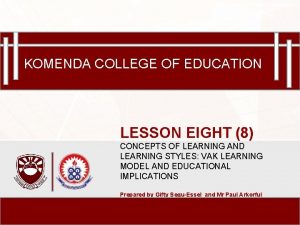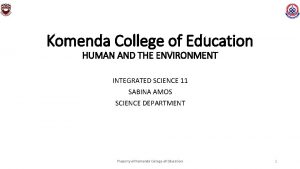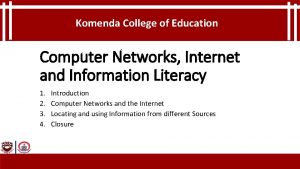KOMENDA COLLEGE OF EDUCATION DEPARTMENT OF SOCIAL SCIENCES

















- Slides: 17

KOMENDA COLLEGE OF EDUCATION DEPARTMENT OF SOCIAL SCIENCES GENERAL PRINCIPLES AND METHODS OF TEACHING IN BASIC SCHOOL (EBS 262)

Lecturer: Mr. Eric K. O. Sekyi Contact Information: ericsekyi 84@yahoo. com 20 th July, 2020

CLASSROOM MANAGEMENT TECHNIQUES What Managers and Teachers Do? q Kreimer and Kinick (1992) define management as the process or working with and through other to achieve organizational objectives in an efficient manner (p. 12) a. Process b. ‘Working” with and through “other” c. Efficient manner d. An organizational objective

CLASSROOM MANAGEMENT TECHNIQUES (Cont. ) Management Functions Versus Teaching Functions q Traditionally, a manager is expected to perform five main functions namely: a. Planning b. Budgeting c. Organizing ü arranging ü selecting d. Controlling e. Problem Solving

CLASSROOM MANAGEMENT TECHNIQUES (Cont. ) q Managing Physical And Social Environment of the Class § Good and Diop (1986) says effective classroom management begins with the physical preparation of the class itself. § Also, the layout of the physical environment should be such that it can reduce or eliminate a number of potential problems that can affect the teaching and learning process § Things that form part of the classroom include the teacher’s table and chair, pupils’ tables and chairs or desks, the building etc.

CLASSROOM MANAGEMENT TECHNIQUES (Cont. ) q The Social Environment of the Classroom There are two main groups in classroom. (a) formal (b) informal § Formal group ü Formal group on the basis of mixed ability groups. E. g. Sections: (a. )Yellow (b) blue (c) green (d) red NB: To promote healthy rivalry or competition in learning, games etc. ü Formal group on the basis of the same ability group. E. g. (a) Very good (b) Good (c ) Below Average

CLASSROOM MANAGEMENT TECHNIQUES (Cont. ) NB: This is done mainly to allow each group of learner proceed at his own pace of learning § Informal class group: it is usually formed by the pupils themselves to meet their personal needs and desires, e. g. playmates club etc.

CLASSROOM MANAGEMENT TECHNIQUES (Cont. ) q The Physical Environment of the Classroom § What the teacher cannot do about the Physical Environment of the class a. The teacher cannot change the positions of the doors and windows b. Can’t control the amount of air that enters the classroom c. Can’t increase the number of pupils’ tables and chairs § What the teacher can do about the Physical Environment of the class a. It creates obstruction: it is when tall pupils sit in front and the short ones sit at the back etc.

CLASSROOM MANAGEMENT TECHNIQUES (Cont. ) q What the teacher can do about the Physical Environment of the class a. It creates obstruction: it is when tall pupils sit in front and the short ones sit at the back etc b. Restricting free movement c. Promotes inattentiveness. Both the obstructions and restriction to movement can lead to inattentiveness d. It affects some pupils physically

CLASSROOM MANAGEMENT TECHNIQUES (Cont. ) q Managing Class for Effective Teaching and Learning Oslom (1871), class activity and amount of creativity in a classroom decreases as class size becomes greater. He suggested thirty-six pupils to be the class size, if above that such classes should be divided into stream. In Ghana some class are even above fifty (50) pupils.

CLASSROOM MANAGEMENT TECHNIQUES (Cont. ) q The Strategies of creating a Good Social Environment are: § Learn on a group basis: helps to reduce the disadvantages associated with both the ability and the mixed abilities grouping. ü Mixed Ability grouping should be done on subject basis ü Ability grouping should always precede mixed ability § Use of class monitors: this should be added to the elections for class prefect, leaders for the sections etc.

CLASSROOM MANAGEMENT TECHNIQUES (Cont. ) q The Strategies of creating a Good Social Environment (Cout. ): § Prompt action on deviant behaviour: such deviant behaviours like lateness to class, using abusive language, fighting, stealing etc. should be promptly dealt with in a more humane manner. § Demonstrate superb teaching skills: exhibit good personality, sound subject matter, knowledge and good teaching.

CLASSROOM MANAGEMENT TECHNIQUES (Cont. ) q Good Teaching Skills: a. b. c. d. e. Demonstrate advanced preparation High level of pupils’ involvement Provide constant supervision by going round the class. Monitor whatever is going on. Mark pupils’ exercises regularly.

CLASSROOM MANAGEMENT TECHNIQUES (Cont. ) q The expectations of the new teacher: § A class that is not noisy § Pupils who are obedient and hardworking. § A class that will co-operate with him/her in the task of teaching and learning. § Pupils whose physiological and psychological needs are adequately provided by parents. § Pupils who are punctual and regular to classes.

CLASSROOM MANAGEMENT TECHNIQUES (Cont. ) q The expectations of the pupils: § A teacher who is loving, friendly and caring. § Other pupils who are loving and friendly. § Other pupils who are supportive and caring. § A class where individual contributors and interest are appreciated and recognized.

CLASSROOM MANAGEMENT TECHNIQUES (Cont. ) q The expectations of the pupils (Cont. ): § A class where there is no potential treat to self-image. § A class where there is freedom to express one’s self or ideas. § A class where there is mutual respect for one another.

THANK YOU
 College of humanities and social sciences
College of humanities and social sciences Site:slidetodoc.com
Site:slidetodoc.com Komenda w radomiu
Komenda w radomiu Dr komenda
Dr komenda Kmp w tarnowie
Kmp w tarnowie Arp net
Arp net Wojskowa komenda
Wojskowa komenda Education desk social sciences uva
Education desk social sciences uva Education desk social sciences uva
Education desk social sciences uva Human sciences vs natural sciences tok
Human sciences vs natural sciences tok Relationship of social work with other social sciences
Relationship of social work with other social sciences Https://moodler.doe.in.gov/
Https://moodler.doe.in.gov/ Queens high school for the sciences
Queens high school for the sciences عبور2ثبت
عبور2ثبت College of information sciences and technology
College of information sciences and technology Robert kwong uf
Robert kwong uf College of behavioral and community sciences
College of behavioral and community sciences Statistics for social sciences
Statistics for social sciences
